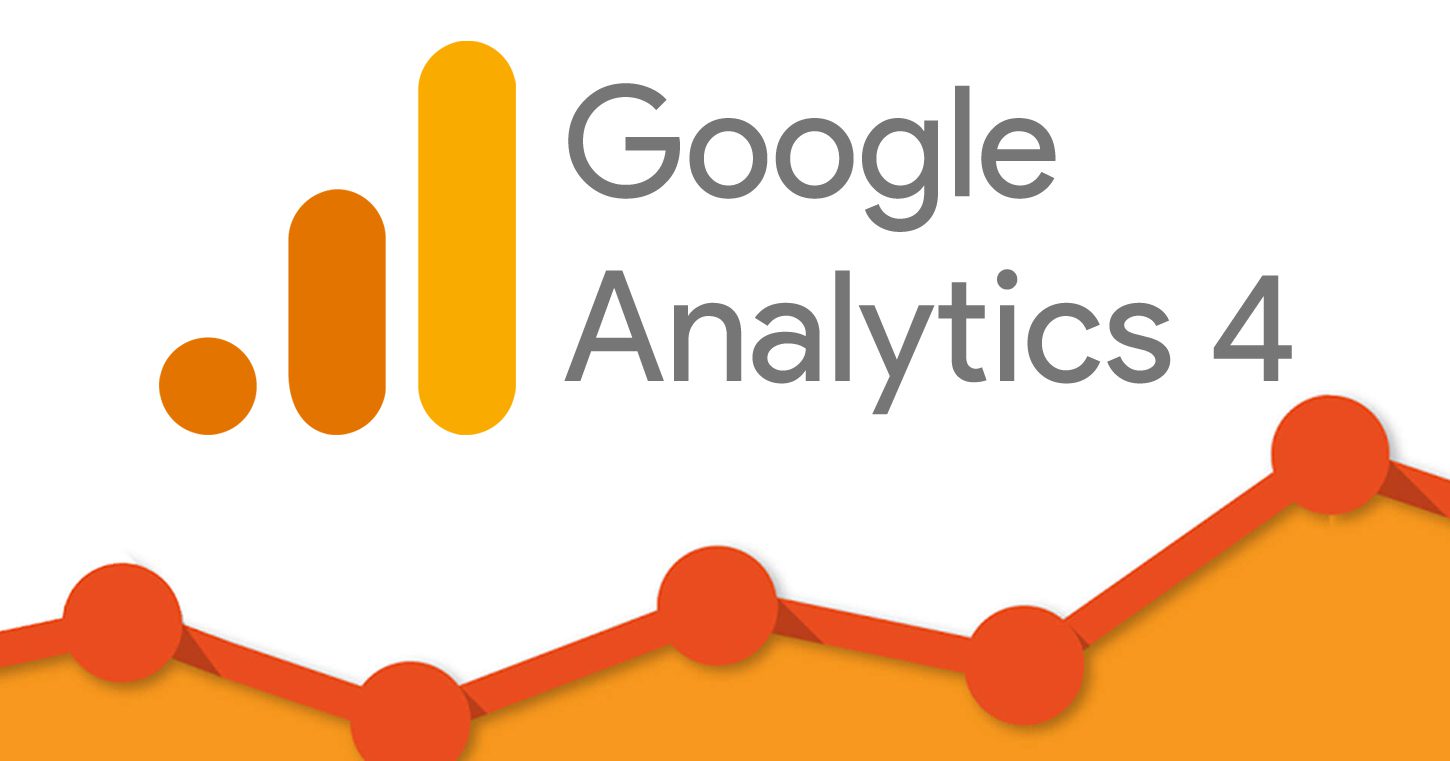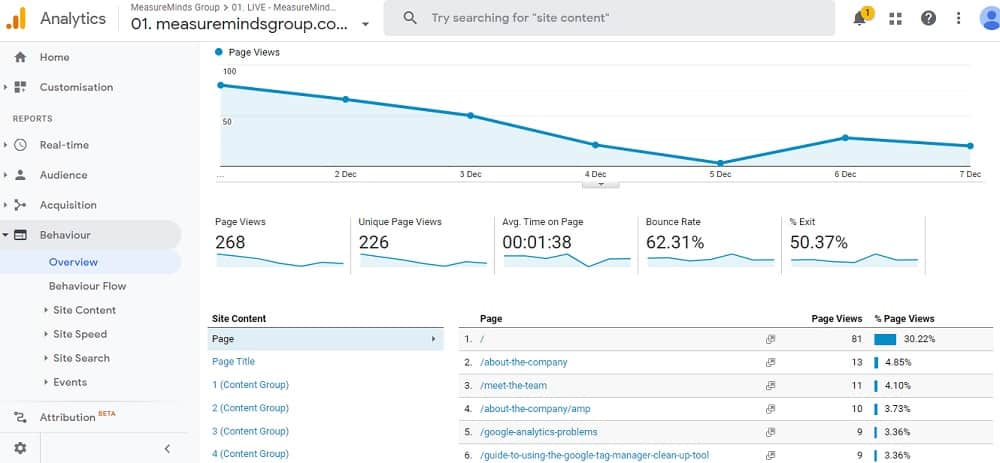Vital Realities: What Type Of Data Google Analytics Avoids You from Collecting
Vital Realities: What Type Of Data Google Analytics Avoids You from Collecting
Blog Article
Leveraging Google Analytics for In-Depth Insights Into Customer Actions and Engagement
In the electronic landscape where individual behavior and interaction hold the essential to online success, leveraging devices like Google Analytics has actually become extremely important for organizations seeking to understand their target market's interactions with their platforms. This sophisticated analytics system offers a riches of data that can reveal detailed information regarding how individuals browse web sites, involve with material, and eventually convert - what data does google analytics prohibit collecting. By using Google Analytics, companies can discover important insights that exceed surface-level metrics, providing an extensive understanding of user habits and choices
Understanding Individual Habits Through Google Analytics
Making use of Google Analytics supplies an extensive understanding of user actions on electronic platforms. By evaluating information such as the number of visitors, their geographic areas, the web pages they visit, and the activities they take, organizations can acquire useful understandings right into exactly how individuals connect with their websites or applications. This information allows for informed decision-making, enabling companies to enhance their on the internet presence for enhanced customer experience and engagement.
One key element that Google Analytics assists to reveal is individual traffic patterns. By tracking metrics like the source of web traffic, referral web links, and prominent keywords, services can determine what drives customers to their platform. what data does google analytics prohibit collecting. This knowledge aids in tailoring advertising approaches to target details demographics or rate of interests properly
In Addition, Google Analytics provides detailed reports on user engagement, showcasing metrics like bounce prices, session durations, and conversion prices. Recognizing these metrics offers beneficial feedback on the effectiveness of material, layout, and overall user experience, equipping companies to make data-driven enhancements and drive better outcomes. Fundamentally, Google Analytics functions as an effective device for understanding user habits and maximizing digital platforms for success.
Studying Internet Site Traffic Patterns
Recognizing the flow of traffic on a web site is important for enhancing its performance and boosting individual involvement. Examining internet site web traffic patterns offers useful insights into just how users interact with the website, what material they find most engaging, and where they may be running into obstacles. By leveraging tools like Google Analytics, site owners can track metrics such as web page views, unique visitors, bounce prices, and average session period to get a detailed understanding of individual behavior.
Researching web traffic resources is critical in establishing where site visitors are coming from, whether with organic search, social media, referrals, or direct website traffic. This information assists in tailoring marketing strategies to target particular target markets efficiently. Additionally, evaluating the habits flow within the website can highlight popular touchdown web pages, exit pages, and the most usual paths individuals take through the site. Determining these patterns allows website owners to make enlightened decisions about content placement, navigation enhancements, and total site style to enhance customer experience and drive conversions.
Monitoring Customer Engagement Metrics
To grow the insights gained from assessing internet site traffic patterns, it is vital to concentrate on tracking customer engagement metrics. Individual interaction metrics offer beneficial information concerning just how visitors interact with a website, suggesting the level of passion and satisfaction with the web content. By tracking metrics such as bounce price, typical session duration, web pages per session, and conversion rates, web site owners can comprehend the performance of their web content and user experience.
Bounce price determines the percent of visitors that navigate far from the website after checking out just one see page, suggesting whether the content is engaging and appropriate. Typical session duration exposes just how much time visitors spend on the site, reflecting their level of rate of interest. Pages per session metric programs the typical number of pages site visitors check out throughout a session, indicating the depth of expedition. Conversion prices track the percentage of visitors that finish a desired action, such as purchasing or filling out a form, showing the performance of the internet site in driving individual activities. By examining these user interaction metrics, website proprietors can make informed choices to optimize their content and user experience to improve engagement and achieve their objectives.
Identifying Conversion Opportunities
Recognizing prospective conversion opportunities is an essential element of enhancing web site performance and accomplishing wanted user activities. Through Google Analytics, services can discover important understandings that can help in identifying areas where users are going down off or otherwise continuing to the desired conversion actions. By evaluating Look At This metrics such as look at this site conversion prices, landing web page efficiency, and customer circulation, organizations can determine potential bottlenecks in the conversion process.

Furthermore, using Google Analytics' actions circulation attribute can offer an aesthetic depiction of how users browse through the internet site. This can aid in determining preferred pathways along with any barricades that may be preventing conversions. By leveraging these insights, organizations can maximize their website for improved individual experience and boosted conversion prices.
Enhancing User Experience With Data-Driven Insights
By leveraging data-driven insights from Google Analytics, services can strategically enhance their internet site to boost individual experience and drive greater conversion rates. Understanding customer behavior through data analysis enables companies to customize their sites to satisfy the specific needs and preferences of their target audience. By identifying key metrics such as bounce prices, session period, and prominent pages, companies can get important insights into just how customers connect with their website.
Google Analytics offers thorough information on customer demographics, gadgets utilized, and even the particular activities taken on the web site. This data allows services to make educated choices on internet site design, web content placement, and general individual flow. By leveraging these insights, companies can create a much more individualized and engaging customer experience, bring about enhanced satisfaction and loyalty.
Additionally, data-driven insights can help companies identify pain factors in the individual journey and apply targeted improvements to streamline the conversion process. By constantly checking and evaluating user behavior, businesses can adapt and optimize their internet site to guarantee a seamless and delightful experience for site visitors, eventually driving greater conversion rates and making best use of company success.

Final Thought
In conclusion, Google Analytics provides beneficial understandings into individual habits and engagement on sites. By analyzing traffic patterns, tracking involvement metrics, and identifying conversion chances, organizations can make data-driven decisions to improve the user experience. Leveraging these understandings can bring about enhanced web site performance and raised conversions.
By tracking metrics such as bounce rate, typical session duration, web pages per session, and conversion rates, website proprietors can comprehend the performance of their content and customer experience.
Conversion rates track the percentage of site visitors that complete a preferred activity, such as filling or making an acquisition out a type, showing the efficiency of the website in driving individual activities. By examining these user involvement metrics, website owners can make educated choices to optimize their web content and customer experience to enhance interaction and attain their goals.
By leveraging these insights, services can enhance their web site for enhanced individual experience and raised conversion rates.
By leveraging data-driven insights from Google Analytics, companies can strategically enhance their internet site to improve customer experience and drive higher conversion rates.
Report this page